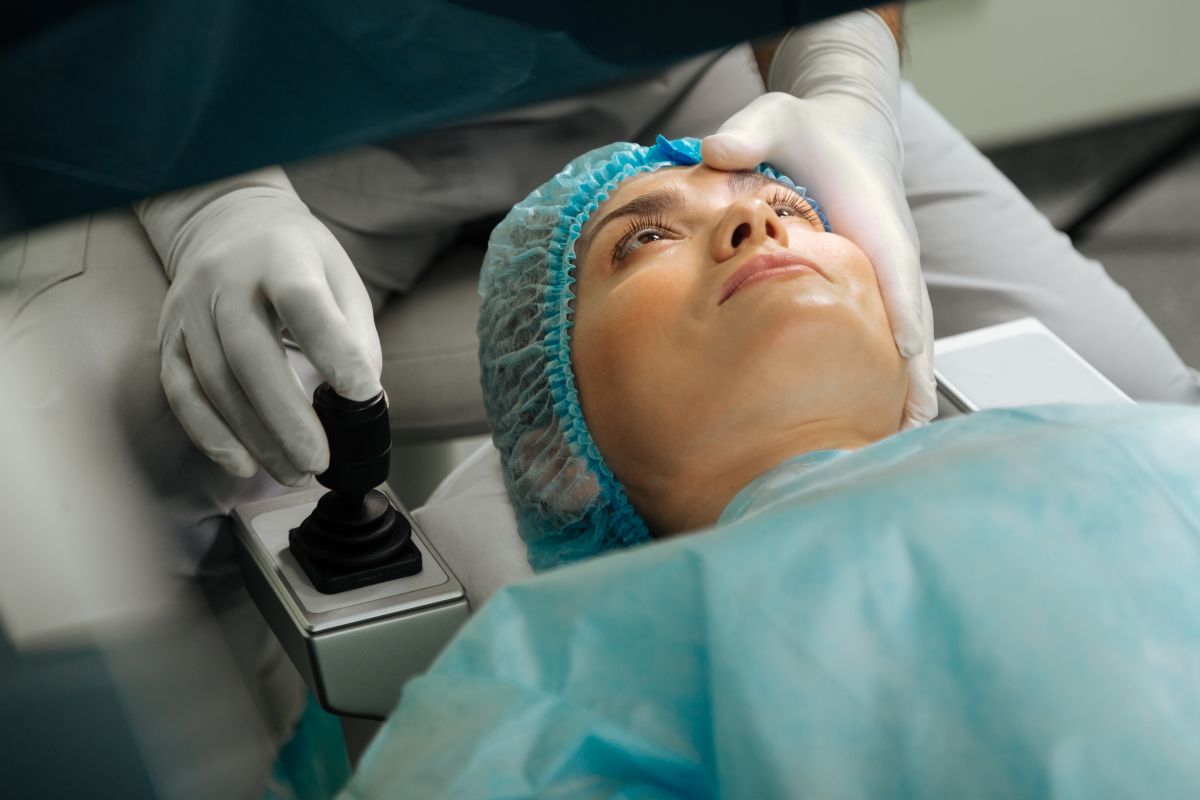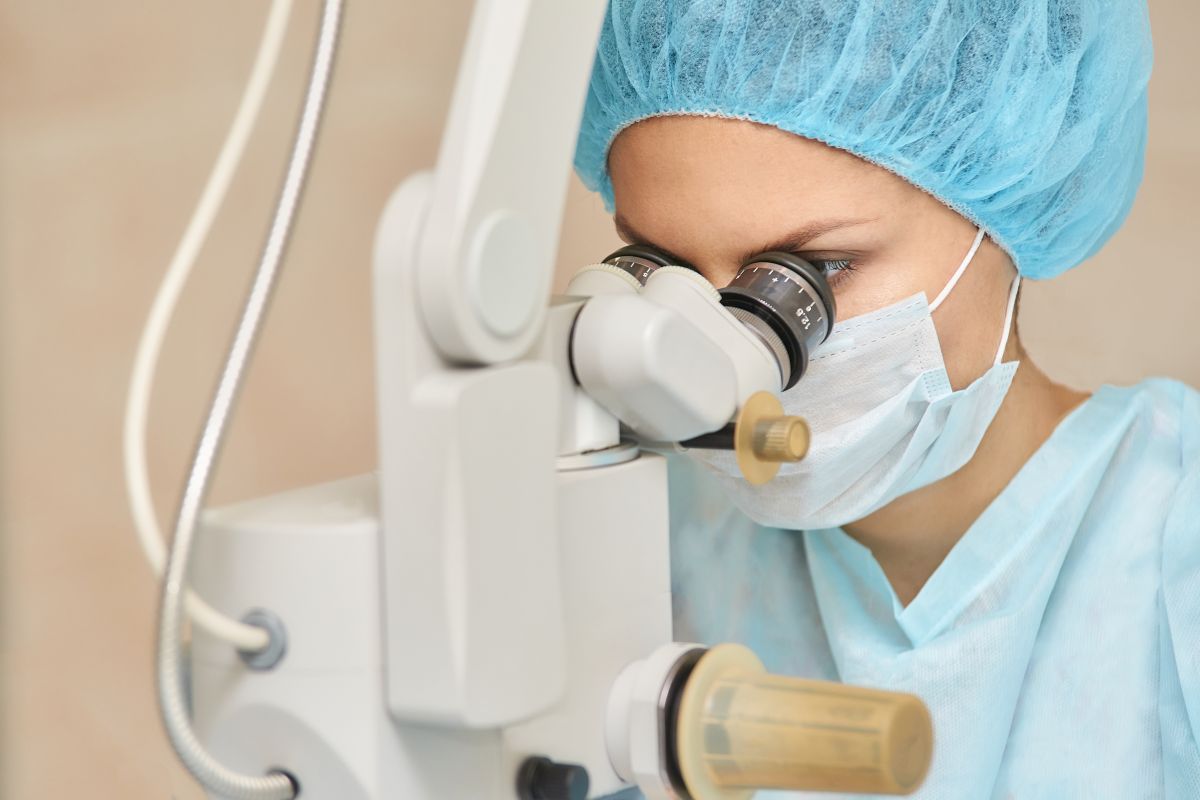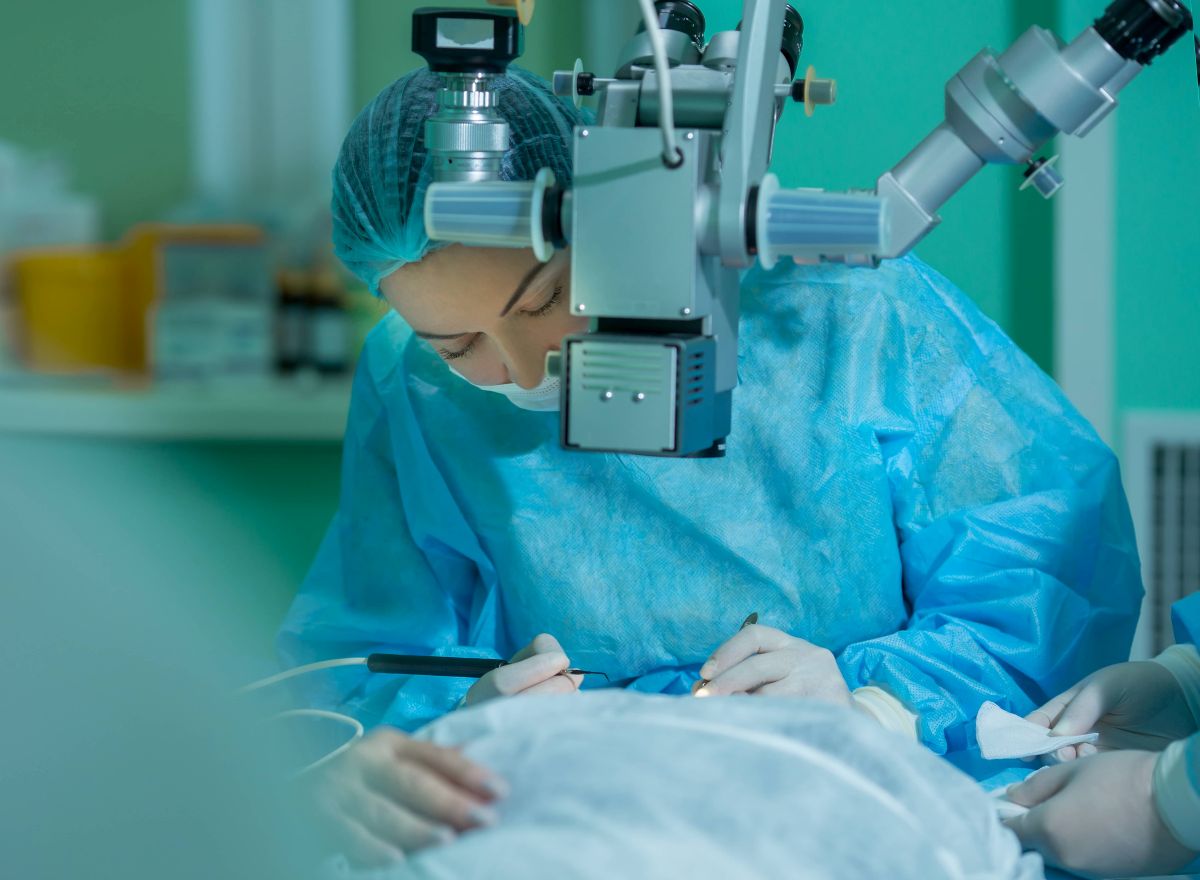Advanced Laser Cataract Surgery: A Step-by-Step Guide
Advanced Laser Cataract Surgery has undergone dramatic changes in the past two decades, and laser-assisted procedures are now a great alternative for those seeking accurate, efficient, and less invasive treatments. Read on and learn what cataracts are, why laser surgery works, and what each step of the procedure entails in Dr. David Goh’s Singaporean clinic.

What is a Cataract?
A cataract is clouding in a clear lens of the eye that causes muzzy vision, glare, and even blindness if left untreated. Cataracts are a leading cause of blindness worldwide. The condition continues to afflict more individuals above 65 years of age but anyone may suffer from cataracts due to diabetes, smoking, exposure to UV lights, or due to eye injuries. Improving cataracts will have impacts on activities of daily living, enhance risks from falls and depreciation of quality of life.
Causes and Risk Factors of Cataracts
The most common cause of cataract in Singapore is ageing. Other factors that can speed the development of cataracts are:
- Diabetes: High blood sugar boosts the risk of developing cataracts early.
- UV Exposure: Ultraviolet exposure to the sun day after day accelerates the progression of cataracts.
- Medications: Steroids taken continuously contribute to the development of cataract.
- Prior Eye Injuries or Surgery: Trauma to the eyes can initiate the formation of cataract.
- Smoking : Cataracts are more likely to affect smokers because of oxidative damage.
- Preventive Measures: UV protection-wearing sunglasses and antioxidant diet, smoking cessation-can delay the development of cataract.
Treatment for Cataract
Some level of cataracts that is not influencing an individual’s sight does not require prompt treatment. Patients may adjust to the new changes using new prescriptions, improved lighting, or magnifying tools to help control symptoms. However, once the cataract starts interfering with their daily activities, surgical removal becomes warranted.
Conventional Cataract Surgery vs Laser-Assisted Surgery
Traditional cataract surgery involves making a cut with a blade to gain access to the cloudy lens for its removal and subsequently an artificial intraocular lens (IOL). Advanced laser-assisted cataract surgery has the laser take care of every detail for better safety, precision, shorter recovery, and a smoother experience.
How Laser Cataract Surgery Takes Place

Carried out at the Dr. David Goh clinic, laser cataract surgery is done in a very step-by-step way to ensure that not only is it safe but effective as well. Here are the stages involved in the process:
Step 1: Consultation and Eye Mapping Before Surgery
Before surgery, Dr. Goh conducts an eye exam to assess the degree of cataract and grade the general health of your eye. He will also discuss relevant aspects of your medical history with you, including pre-existing conditions, medications, and allergies that may impact surgery.
Advanced imaging technology is used to map the surface of the eye and pinpoint where the cataract lies. The detailed mapping can then be used to produce a tailored plan for surgery, which will take into account even the smallest irregularities.
Step 2: Preparing Anaesthesia
On the day of the surgery, your eye is numbed with drops. There would not be any pain you are feeling during the surgery process. Injections are rarely required; thus there would be fewer risks and rapid recovery.
Step 3: Laser Incision and Lens Fragmentation
Probably one of the greatest benefits of performing advanced laser cataract surgery Singapore is that a femtosecond laser can be used to make a shallow, controlled incision into the cornea to gain access to the cataract. The same laser then liquefies and disrupts the cloudy lens so it can be easier to remove and utilise less ultrasound energy, which traditionally had to be used in manual surgery.
This laser-guided fragmentation results in minimum trauma to the surrounding tissues, thus ensuring fast healing and minimal inflammation.
Step 4: Cataract Extraction and Artificial Lens Implantation
Once the cataract is broken down, a delicate suction device removes the fragments of the cataract from the lens capsule. The intraocular lens will be implanted by Dr. Goh in the lens capsule. According to your lifestyle needs or personal preferences, you may choose either monofocal with clear vision at one distance or multifocal for a broader range of vision.
The incisions made by the laser are self-sealing, meaning in most cases the incisions will close on their own, which encourages a much faster, more comfortable recovery.
Advantages of Advanced Laser Cataract Surgery
Laser cataract surgery has several advantages:
- Improved Accuracy: The laser only makes precise incisions which reduces the possibility of human error.
- Less Damage to the Eye: Lasers tend to cause less disturbance to the surrounding tissue by reducing the power of ultrasound.
- Rapid Healing Time: Patients usually have a quick recovery period and less inflammation after surgery.
- Adjustability: Dr. Goh can prescribe you the specific shape of your eye so that you get the best possible outcome.
Follow-Up Care and Recovery After Surgery

Patients are directed by Dr. Goh on proper recovery after surgery, which may include:
- Use Prescribed Eye Drops: This helps prevent infection, reduces inflammation, and keeps your eyes comfortable.
- Avoiding Strenuous Activities: Avoid heavy lifting and strenuous activities for a few days as the injured eye will not be able to withstand the stress.
- Protect Your Eye: Wear a protective shield at night and sunglasses out of doors to protect your eye from accidental injury or UV rays.
- Follow-Up: Dr. Goh will set follow-up appointments to assess the healing of your eye and your vision.
At a majority of patients, noticeable improvement will take place days after the surgery, but the eye keeps on stabilising in succeeding weeks. So at the end of one month, the vision becomes much clearer.
Risks and Success Rate of Cataract Surgery
Among the safest and most successful surgeries performed today worldwide, cataract surgery, especially when using advanced laser techniques, boasts a success rate of well over 98 percent in restoring clearer vision. Although such complications seldom occur in any surgical procedure, there is always a risk of infection, inflammation, or even retinal detachment, about which Dr. Goh will discuss with you.
Conclusion
Advanced laser cataract surgery has proved to revolutionise eye care by providing patients with a safe, precise, and efficient experience that restores vision and has really improved the quality of their life. Dr David Goh established his clinic in Singapore devoted to providing personalised state-of-the-art treatment for cataracts with strong focus on patient comfort and successful outcomes. Being selected for laser-assisted surgery will be beneficial to a patient as a quick recovery period, lesser discomfort, and generally a better experience.

